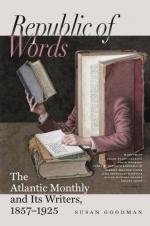On the 31st of July, 1857, the committee reported a large body of testimony, but without any decisive recommendations. They “apprehend that the districts on the Red River and the Saskatchewan are among those most likely to be desired for early occupation,” and “trust that there will be no difficulty in effecting arrangements between her Majesty’s government and the Hudson Bay Company, by which those districts may be ceded to Canada on equitable principles, and within the districts thus annexed to her the authority of the Hudson Bay Company would of course entirely cease.” They deemed it “proper to terminate the connection of the Hudson Bay Company with Vancouver Island as soon as it could conveniently be done, as the best means of favoring the development of the great natural advantages of that important colony; and that means should also be provided for the ultimate extension of the colony over any portion of the adjacent continent, to the west of the Rocky Mountains, on which permanent settlement may be found practicable.”
These suggestions indicate a conviction that the zone of the North American continent between latitudes 49 deg. and 55 deg., embracing the Red River and the Saskatchewan districts, east of the Rocky Mountains, and the area on their western slope, since organized as British Columbia, was, in the judgment of the committee, suitable for permanent settlement. As to the territory north of the parallel of 55 deg., an opinion was intimated, that the organization of the Hudson’s Bay Company was best adapted to the condition of the country and its inhabitants.
Within a year after the publication of this report, a great change passed over the North Pacific coast. The gold discovery on Frazer’s River occurred; the Pacific populations flamed with excitement; British Columbia was promptly organized as a colony of England; and, amid the acclamations of Parliament and people, Sir Edward Bulwer Lytton proclaimed, in the name of the government, the policy of continuous colonies from Lake Superior to the Pacific, and a highway across British America, as the most direct route from London to Pekin or Jeddo.
The eastern boundary of British Columbia was fixed upon the Rocky Mountains. The question recurred, with great force, What shall be the destiny of the fertile plains of the Saskatchewan and the Red River of the North? Canada pushed forward an exploration of the route from Fort William, on Lake Superior, to Fort Garry, on the Red River, and, under the direction of S.J. Dawson, Esq., civil engineer, and Professor J.Y. Hinde, gave to the world an impartial and impressive summary of the great natural resources of the basin of Lake Winnipeg. The merchants of New York were prompt to perceive the advantages of connecting the Erie Canal and the Great Lakes—with the navigable channels of Northwest America, now become prominent and familiar designations of commercial geography. A report to the New York Chamber of




